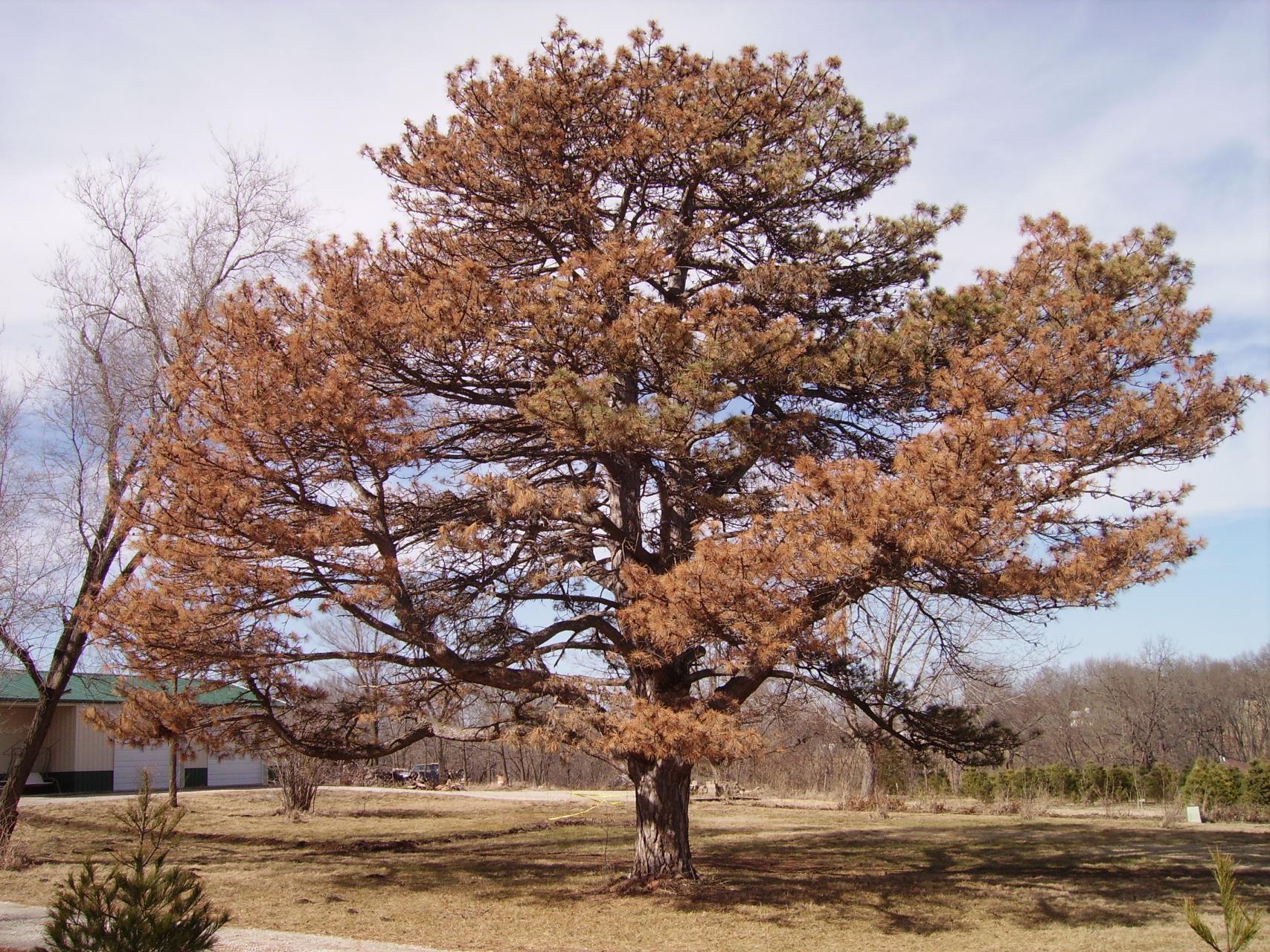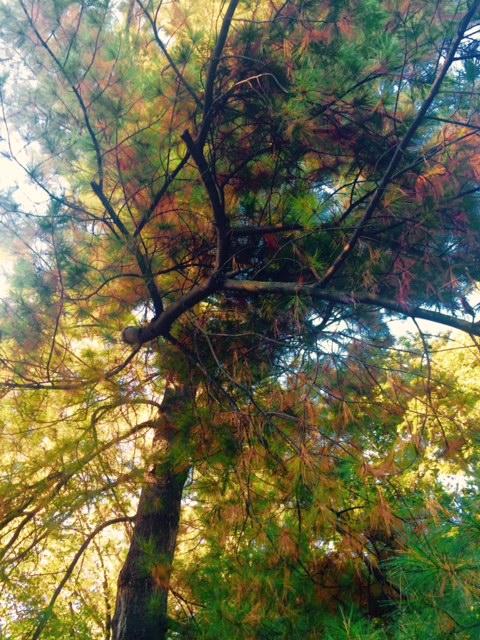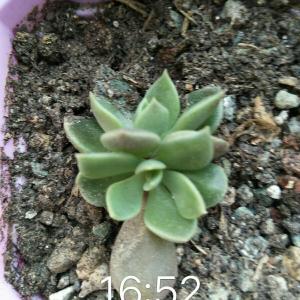文章
Miss Chen
2017年09月18日

#茶花潜叶蛾
分布与危害
被害幼叶的表皮出现半透明斑纹,被害新梢的表皮,出现白色或半透明泡状。茶花植株生长不良,叶片扭曲脱落。
形态特征
成虫体长3-4毫米,翅展8-9毫米。体银白色,具光泽。头顶乳黄色,有1束的银白色毛竖立着;触角基部形成大的“眼罩”。前翅银白色,前缘近中央1波纹状斜带伸向后缘,近端部有褐色纹4条,l-2条、3-4条之间呈淡黄色,2-3条之间为银白色。臀角上有1黑色斑纹,斑纹中间有银色凸起,缘毛前半部褐色,后半部银白色;后翅披针形,银白色,缘毛极长。腹部腹面6节,雄虫第9节背板明显,与雌虫的区别。复眼黑色,常被触角鳞毛覆盖。
卵长0.3毫米,扁圆形,暗灰色,表面具网眼状刻纹。
幼虫老熟幼虫体长6.5毫米,体扁平,黄白色。头部及胴部每节侧方生有长毛3根。前胸背板乳白色。体节明显,腹部第三节最大,后方各节逐渐缩小。褐色口器,触角3节,单眼2个,呈黑褐色。
蛹藏于白色丝茧内,长3毫米,浅黄色,梭形。
发生规律
潜叶蛾以幼虫潜入茶花嫩叶和新梢皮下,进行蛀食,5月份开始危害,6月份虫害逐渐严重,到7~9月份虫害最为严重。
防治方法
①、化学防治:尽量选择在低龄幼虫期防治。此时虫口密度小,危害小,且虫的抗药性相对较弱。防治时用45%丙溴辛硫磷(国光依它)1000倍液,或国光乙刻(20%氰戊菊酯)1500倍液+乐克(5.7%甲维盐)2000倍混合液,40%啶虫.毒(必治)1500-2000倍液喷杀幼虫,可连用1-2次,间隔7-10天。可轮换用药,以延缓抗性的产生。
②、家庭盆栽茶花如有若虫为害,可用人工捕捉杀灭。
分布与危害
被害幼叶的表皮出现半透明斑纹,被害新梢的表皮,出现白色或半透明泡状。茶花植株生长不良,叶片扭曲脱落。
形态特征
成虫体长3-4毫米,翅展8-9毫米。体银白色,具光泽。头顶乳黄色,有1束的银白色毛竖立着;触角基部形成大的“眼罩”。前翅银白色,前缘近中央1波纹状斜带伸向后缘,近端部有褐色纹4条,l-2条、3-4条之间呈淡黄色,2-3条之间为银白色。臀角上有1黑色斑纹,斑纹中间有银色凸起,缘毛前半部褐色,后半部银白色;后翅披针形,银白色,缘毛极长。腹部腹面6节,雄虫第9节背板明显,与雌虫的区别。复眼黑色,常被触角鳞毛覆盖。
卵长0.3毫米,扁圆形,暗灰色,表面具网眼状刻纹。
幼虫老熟幼虫体长6.5毫米,体扁平,黄白色。头部及胴部每节侧方生有长毛3根。前胸背板乳白色。体节明显,腹部第三节最大,后方各节逐渐缩小。褐色口器,触角3节,单眼2个,呈黑褐色。
蛹藏于白色丝茧内,长3毫米,浅黄色,梭形。
发生规律
潜叶蛾以幼虫潜入茶花嫩叶和新梢皮下,进行蛀食,5月份开始危害,6月份虫害逐渐严重,到7~9月份虫害最为严重。
防治方法
①、化学防治:尽量选择在低龄幼虫期防治。此时虫口密度小,危害小,且虫的抗药性相对较弱。防治时用45%丙溴辛硫磷(国光依它)1000倍液,或国光乙刻(20%氰戊菊酯)1500倍液+乐克(5.7%甲维盐)2000倍混合液,40%啶虫.毒(必治)1500-2000倍液喷杀幼虫,可连用1-2次,间隔7-10天。可轮换用药,以延缓抗性的产生。
②、家庭盆栽茶花如有若虫为害,可用人工捕捉杀灭。
0
1
文章
Dummer. ゛☀
2017年09月18日

The eastern white pine, Pinus strobus, is a fast growing, easily transplanted tree. It can become quite large, requiring sufficient room to develop properly. White pine needles are bluish-green to medium-green with five per bundle, about 4 inches long, very thin, and not stiff. Used as a windbreak, the limbs are brittle and may suffer wind damage which can help lead to decline of the tree. In general, symptoms of decline include some pattern of needle yellowing or browning, shriveled bark on trunk and branches, oozing sap, and in some cases, death of the tree. Affected trees can range from 2 feet to 20 feet or more. The main factor is root decline.
Symptoms and Diagnosis
Inspect the roots for brown discoloration and the outer layer pulling off or not present. If the roots are white and healthy, then there are other problems. Other symptoms will be yellowing or browning of the needles and a limp appearance. Do not, however, confuse this with the normal yellowing and shedding of just older needles that occurs annually in the fall. The bark of the trunk and branches may shrivel and ooze sap. White pines suffer under conditions of urban stress, resulting in decreased vigor, less branching, shorter needles, and noticeable foliage chlorosis.
Life Cycle
There is no life cycle as the problem is environmental. There can be many contributing factors, one of which is air pollutants. Other factors can be soil pH, water-logged soil, drought, flooding, heat, and sudden extremes in temperature and moisture. Heat is a main consideration. Even though white pine grows from USDA Zone 3 to 8, it does not appear to thrive in the hot humid areas. Possible use as an understory tree in these areas may help it survive.
A white pine in poor health can be attacked by two root pathogens which can speed the decline of the tree; however, they are not the cause of decline. These pathogens are Phytophthora and Verticicladiella. Fungicides are not recommended as the fungi are not the cause of the tree decline.
Integrated Pest Management Strategies
1. Maintain plant vigor. When planting the tree, insure that the soil is moist, rich, well-drained, and on the acid side. The white pine can tolerate full sun though it will perform better in partial shade. Avoid hot, west-facing sites.
2. Select the planting area carefully. Do not use white pines as a windbreak. Since the branches are brittle, they can be damaged, causing stress in the tree. The brittleness can also lead to damage from snow and ice. Do not plant along roadways as salt spray is injurious to the tree. The tree is also subjected to ozone stress which causes needle tips to brown.
3. Planting time. White pines are best planted in spring. If fall planting is done, care should be taken to amend the soil, fertilize, water thoroughly, mulch adequately, and consider application of an anti-desiccant during early winter. Avoid using winter salt on roadways and paths especially where traffic is high.
4. On-going care. Make sure the soil is adequately drained and that the tree is watered in periods of drought. Fertilize with an acid-type fertilizer like ammonium sulfate.
5. Removal. Prompt removal of white pines suffering from decline is not required as they will not infect surrounding pines.

Symptoms and Diagnosis
Inspect the roots for brown discoloration and the outer layer pulling off or not present. If the roots are white and healthy, then there are other problems. Other symptoms will be yellowing or browning of the needles and a limp appearance. Do not, however, confuse this with the normal yellowing and shedding of just older needles that occurs annually in the fall. The bark of the trunk and branches may shrivel and ooze sap. White pines suffer under conditions of urban stress, resulting in decreased vigor, less branching, shorter needles, and noticeable foliage chlorosis.

Life Cycle
There is no life cycle as the problem is environmental. There can be many contributing factors, one of which is air pollutants. Other factors can be soil pH, water-logged soil, drought, flooding, heat, and sudden extremes in temperature and moisture. Heat is a main consideration. Even though white pine grows from USDA Zone 3 to 8, it does not appear to thrive in the hot humid areas. Possible use as an understory tree in these areas may help it survive.
A white pine in poor health can be attacked by two root pathogens which can speed the decline of the tree; however, they are not the cause of decline. These pathogens are Phytophthora and Verticicladiella. Fungicides are not recommended as the fungi are not the cause of the tree decline.

Integrated Pest Management Strategies
1. Maintain plant vigor. When planting the tree, insure that the soil is moist, rich, well-drained, and on the acid side. The white pine can tolerate full sun though it will perform better in partial shade. Avoid hot, west-facing sites.
2. Select the planting area carefully. Do not use white pines as a windbreak. Since the branches are brittle, they can be damaged, causing stress in the tree. The brittleness can also lead to damage from snow and ice. Do not plant along roadways as salt spray is injurious to the tree. The tree is also subjected to ozone stress which causes needle tips to brown.

3. Planting time. White pines are best planted in spring. If fall planting is done, care should be taken to amend the soil, fertilize, water thoroughly, mulch adequately, and consider application of an anti-desiccant during early winter. Avoid using winter salt on roadways and paths especially where traffic is high.
4. On-going care. Make sure the soil is adequately drained and that the tree is watered in periods of drought. Fertilize with an acid-type fertilizer like ammonium sulfate.

5. Removal. Prompt removal of white pines suffering from decline is not required as they will not infect surrounding pines.
0
0
文章
丫头
2017年09月17日

其实#空心菜 种植时间和方法挺简单的,每年的4-8月都可以种植空心菜,以春、夏两季为主,夏季高温时生长旺盛,秋季虽然也可种植,但容易开花。

一、如果是播种空心菜,选择在春季较好,夏季多用扦插繁殖,其中以扦插法最为方便和简单。
1、从市场上买来的空心菜就可以直接用于扦插,如果太长则截成15厘米左右的小段再进行扦插。自己种植的空心菜,在生长期间可以随时剪枝扦插。
2、一般2~3株一起插入土中,单株的话适当密植,如果旱栽要修剪掉一部分的叶子。插条至少有3节埋人土内,有2~3节露出土面即可,将土稍压实,每天浇水以保持土壤湿润,一般3~4天就可以成活。
二、播种:
1、一般在4~8月播种,发芽适温20~35℃,温度低时可用温水浸泡催芽。一般用撒播法,覆土1~2厘米,浇透水,约1周发芽,期间必须保持土壤湿润。
2、3~5片真叶时施稀薄的腐熟有机肥1次,以氮肥为主。当有6片以上真叶时即可正常管理。
三、日常管理:
1、每采摘3~4次后要对植株进行1次重剪,只保留基部的1~2个节,并疏去一些过弱的侧枝。
2、喜潮湿且不怕涝,极适合水耕,干旱则会影响口感,原则上要保持土壤湿润,以促使其萌发较多的不定根。盆栽需每天浇水;水耕在定植后水深约2~3厘米,随长势和气温升高水深应逐步加到约1 O厘米,温度低时须降低水的深度。若条件有限,还可以直接用水栽培,在水中加适量氮肥,长势亦不错。
3、喜肥,亦较耐肥,宜下足基肥。生长期需肥量大,以氮肥为主,随长势渐旺而增加施肥的浓度,一般每l O天左右施1次腐熟有机肥,或每次采摘后2~3天追肥1次。
四、采收:
一般在苗高25~35厘米左右时即可采收,采摘时留基部2~3节用手将嫩梢掐下。

一、如果是播种空心菜,选择在春季较好,夏季多用扦插繁殖,其中以扦插法最为方便和简单。
1、从市场上买来的空心菜就可以直接用于扦插,如果太长则截成15厘米左右的小段再进行扦插。自己种植的空心菜,在生长期间可以随时剪枝扦插。
2、一般2~3株一起插入土中,单株的话适当密植,如果旱栽要修剪掉一部分的叶子。插条至少有3节埋人土内,有2~3节露出土面即可,将土稍压实,每天浇水以保持土壤湿润,一般3~4天就可以成活。
二、播种:
1、一般在4~8月播种,发芽适温20~35℃,温度低时可用温水浸泡催芽。一般用撒播法,覆土1~2厘米,浇透水,约1周发芽,期间必须保持土壤湿润。
2、3~5片真叶时施稀薄的腐熟有机肥1次,以氮肥为主。当有6片以上真叶时即可正常管理。
三、日常管理:
1、每采摘3~4次后要对植株进行1次重剪,只保留基部的1~2个节,并疏去一些过弱的侧枝。
2、喜潮湿且不怕涝,极适合水耕,干旱则会影响口感,原则上要保持土壤湿润,以促使其萌发较多的不定根。盆栽需每天浇水;水耕在定植后水深约2~3厘米,随长势和气温升高水深应逐步加到约1 O厘米,温度低时须降低水的深度。若条件有限,还可以直接用水栽培,在水中加适量氮肥,长势亦不错。
3、喜肥,亦较耐肥,宜下足基肥。生长期需肥量大,以氮肥为主,随长势渐旺而增加施肥的浓度,一般每l O天左右施1次腐熟有机肥,或每次采摘后2~3天追肥1次。
四、采收:
一般在苗高25~35厘米左右时即可采收,采摘时留基部2~3节用手将嫩梢掐下。
3
9
成长记
vlavla845
2017年09月17日

I new added a "Unidentified 4" in my "garden"


1
0
cclecombe:Looks like an Oxalis Triangularis
文章
Miss Chen
2017年09月17日

相关图片

#杜鹃红蜘蛛
分布与危害
危害杜鹃
形态特征
红蜘蛛的雌成虫体长0.3毫米左右,暗红色,近椭圆形,体背隆起,足4对,暗红色。雄成虫体长0.25毫米,楔形,扁平,鲜红色。
发生规律
一年发生多代,成虫在植株根部越冬,主要在叶背面近叶柄部的主脉附近危害。每年的6至7月高温、少雨、干旱天气繁殖快,发生数量较多。危害严重时,被害叶片焦枯脱落。
防治方法
1、人工防治:4月份以后应经常检查,发现个别叶片上有红蜘蛛时,应及时摘除虫叶并烧掉。有条件的可人工释放天敌,如瓢虫、草青蛉、蓟马等,进行生物防治。
2、药剂防治:若发现较多叶片有红蜘蛛时,可进行药剂防治,使用10%苯丁哒螨灵乳油(如国光红杀)1000倍液或10%苯丁哒螨灵乳油(如国光红杀)1000倍液+5.7%甲维盐乳油(如国光乐克)3000倍液混合后喷雾防治,建议连用2次,间隔7-10天。

#杜鹃红蜘蛛
分布与危害
危害杜鹃
形态特征
红蜘蛛的雌成虫体长0.3毫米左右,暗红色,近椭圆形,体背隆起,足4对,暗红色。雄成虫体长0.25毫米,楔形,扁平,鲜红色。
发生规律
一年发生多代,成虫在植株根部越冬,主要在叶背面近叶柄部的主脉附近危害。每年的6至7月高温、少雨、干旱天气繁殖快,发生数量较多。危害严重时,被害叶片焦枯脱落。
防治方法
1、人工防治:4月份以后应经常检查,发现个别叶片上有红蜘蛛时,应及时摘除虫叶并烧掉。有条件的可人工释放天敌,如瓢虫、草青蛉、蓟马等,进行生物防治。
2、药剂防治:若发现较多叶片有红蜘蛛时,可进行药剂防治,使用10%苯丁哒螨灵乳油(如国光红杀)1000倍液或10%苯丁哒螨灵乳油(如国光红杀)1000倍液+5.7%甲维盐乳油(如国光乐克)3000倍液混合后喷雾防治,建议连用2次,间隔7-10天。
0
0
文章
Dummer. ゛☀
2017年09月17日

Stink bugs are attractive and distinctive insects that are generally easy to identify. Ranging in size from 1/4 to 1 inch long and about half as broad, they are shield-shaped with a triangle-like horny scale on their back. Also, as the name indicates, many stink bugs do produce an offensive odor when disturbed. The most common pest species are green, brown, gray, or yellow and some have red or yellow markings. Their host plants include blackberry, cabbage and other members of the mustard family, corn, tomato, eggplant, bean, soybean, and trees such as apple, peach, pecan, and cherry. Stink bugs may also be found on ornamental plants including columbine, snapdragon, and sunflower. The harlequin bug, Murgantia histrionica, a red and black-spotted species of stink bug, is an important pest of crops in the mustard family in the southern United States. The green stink bug, Acrosternum hilare, and brown stink bugs, Euschistus spp., can be of economic importance in soybean fields primarily by reducing seed quality and quantity. A few species of stink bugs are predatory on other insects.
Symptoms and Diagnosis
In the "true bug" group, stink bugs feed by inserting their mouth parts into the leaves, flowers, buds, fruit, and seeds of host plants and sucking plant sap. Large infestations of stink bugs may cause plants, especially small plants and young tender growth, to wilt, become stunted and misshapen, or die. Other damage includes yellow or white blotches on leaves; misshapen or aborted fruits, seeds, and buds; calluses, blemishes or depressions; and black pits on nuts. Tomatoes exhibit pale yellow spots and a white pithy area just under the skin at the puncture site. Peaches and other fruits may develop scarring and dimpling resulting in cat-facing or a pitted appearance. The seeds in soybean pods may be deformed, small, discolored, or shriveled.
Life Cycle
The stink bug overwinters as an adult in protected areas such as under dead weeds, leaf litter, or the bark of trees. In early summer, the female lays clusters of eggs on the underside of leaves. These eggs are barrel or keg-shaped with a circular lid. In one to three weeks, the young hatch into wingless nymphs that resemble small adult stink bugs, although the coloration may differ from that of the adult. The nymphs will molt several times before developing wings and becoming an adult. The number of generations per year depends on the species.
Integrated Pest Management Strategies
1. Sanitation. Control weeds in susceptible crops and in areas adjacent to gardens to decrease breeding and overwintering habitat. It is important to remove weeds early in the growing season before stink bug populations increase or the loss of habitat may force pests to move into the garden.
2. Collect insects. Hand pick and destroy eggs and bugs.
3. Use natural controls. Encourage other natural predators such as parasitic wasps and flies by growing small-flowered plants. The unpleasant odor produced by stink bugs deters many predators but several bird species do consume these pests.
4. Use trap crops. Plant trap crops of mustard and treat that area with an appropriate pesticide.
5. Use insecticides. If damage is severe, use insecticidal soap, sabadilla, pyrethrin or permethrin (Eight).

Symptoms and Diagnosis
In the "true bug" group, stink bugs feed by inserting their mouth parts into the leaves, flowers, buds, fruit, and seeds of host plants and sucking plant sap. Large infestations of stink bugs may cause plants, especially small plants and young tender growth, to wilt, become stunted and misshapen, or die. Other damage includes yellow or white blotches on leaves; misshapen or aborted fruits, seeds, and buds; calluses, blemishes or depressions; and black pits on nuts. Tomatoes exhibit pale yellow spots and a white pithy area just under the skin at the puncture site. Peaches and other fruits may develop scarring and dimpling resulting in cat-facing or a pitted appearance. The seeds in soybean pods may be deformed, small, discolored, or shriveled.

Life Cycle
The stink bug overwinters as an adult in protected areas such as under dead weeds, leaf litter, or the bark of trees. In early summer, the female lays clusters of eggs on the underside of leaves. These eggs are barrel or keg-shaped with a circular lid. In one to three weeks, the young hatch into wingless nymphs that resemble small adult stink bugs, although the coloration may differ from that of the adult. The nymphs will molt several times before developing wings and becoming an adult. The number of generations per year depends on the species.

Integrated Pest Management Strategies
1. Sanitation. Control weeds in susceptible crops and in areas adjacent to gardens to decrease breeding and overwintering habitat. It is important to remove weeds early in the growing season before stink bug populations increase or the loss of habitat may force pests to move into the garden.
2. Collect insects. Hand pick and destroy eggs and bugs.
3. Use natural controls. Encourage other natural predators such as parasitic wasps and flies by growing small-flowered plants. The unpleasant odor produced by stink bugs deters many predators but several bird species do consume these pests.

4. Use trap crops. Plant trap crops of mustard and treat that area with an appropriate pesticide.
5. Use insecticides. If damage is severe, use insecticidal soap, sabadilla, pyrethrin or permethrin (Eight).
0
0













